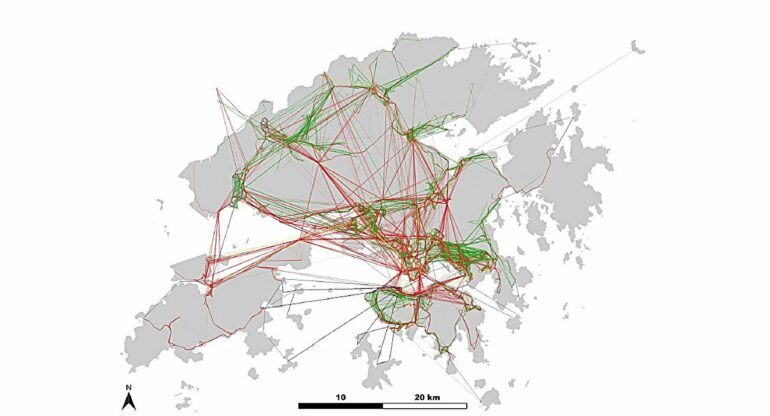Cities are fortifying the resilience of their urban infrastructure networks to tackle potential unforeseen disruptions, particularly due to extreme weather resulting from climate change. Recently, researchers from City University of Hong Kong (CityU) used the Hong Kong public transport system as a case study to reveal the crucial role of interconnections between different transportation modes in bolstering system resilience against adverse disruptions.
The study provides valuable insights into how interconnectedness significantly improves network robustness, presenting a new approach for designing urban network-like infrastructure worldwide. Titled “Interconnectedness enhances network resilience of multimodal public transportation systems for Safe-to-Fail urban mobility,” it has been published in the journal Nature Communications.
“Cities worldwide strive to strengthen their infrastructure resilience against extreme weather, while pursuing sustainability and climate change mitigation goals,” said Professor Shauhrat S. Chopra, Assistant Professor in the School of Energy and Environment at CityU, who led the research. “This requires a revamp of urban-planning strategies and an overhaul of infrastructure systems to guarantee long-term sustainability and short-term resilience.”
Modern infrastructure is highly interconnected and interdependent. Thus, it is imperative to understand infrastructure resilience, especially when the impact of failure is exacerbated in cities with extensive networks of interconnected and interdependent infrastructure. However, current transportation system studies have limited understanding of how resilience is affected when multiple systems cooperate through interconnections.
To address the gaps, the team modeled a multi-modal public transportation network (MPTN) by integrating each mode of transportation and evaluating network resilience during the integration process. They used Hong Kong, which has an extensive public transportation system handles about 90% of the city’s daily commuting and traveling ridership, as the case study.
Six modes of transportation in Hong Kong were studied: the Mass Transit Railway (MTR), franchised buses, green minibuses, light rail, ferries and trams. The study presented the characteristics of each mode and showed the changes in their resilience due the integration of the public transportation networks. The study also analyzed indicators of resilience, such as network robustness and interoperability.
“The study reveals the potential hazards of disruptions in Hong Kong’s public transport system,” said Professor Chopra. “But it also presents a silver lining by revealing the resilience of highly interconnected transportation networks. We found that these multimodal systems reduce potential points of failure in the network structure, enhance tolerance against disruptions, and improve post-disruption interoperability. Intermodal interconnections enable public transport operators to withstand and recover swiftly, thus preventing disruptions from causing congestion in the city.”
According to the study, the MPTN in Hong Kong exhibits strong tolerance to minor disruptions after three subsystems—MTR, franchised buses, and green minibuses—are integrated and shows increased robustness when faced with random disruptions and deliberate attacks on interchange stations and hubs. It also highlights the potential for integrating vulnerable systems to bolster their robustness, a finding that holds promise for a wide array of real-world critical infrastructure systems.
“Our findings suggest that interconnectedness offers a distinct approach to enhancing transportation resilience, beyond simply improving each system in isolation or introducing an entirely new system,” said Professor Chopra. “Operators and planners usually utilize established strategies, like contingency planning, to address journey reliability and disruption risks, reflecting the conventional ‘resilience-by-intervention’ approach. But our study shows that network science can offer a complementary ‘resilience-by-design’ perspective that emphasizes the system design and immediate response generated within the system to tackle unforeseen disruptions.
“We believe the insights gleaned from our study can be applied to the design of ‘safe-to-fail’ public transit networks and other network-like infrastructure around the world. Developing deeper knowledge of how resilient design principles can be applied across coupled infrastructure networks is essential for creating smart, sustainable cities,” he added.
More information:
Zizhen Xu et al, Interconnectedness enhances network resilience of multimodal public transportation systems for Safe-to-Fail urban mobility, Nature Communications (2023). DOI: 10.1038/s41467-023-39999-w
Provided by
City University of Hong Kong
Citation:
Enhancing resilience of urban public transport systems through greater network interconnectedness (2024, January 19)



